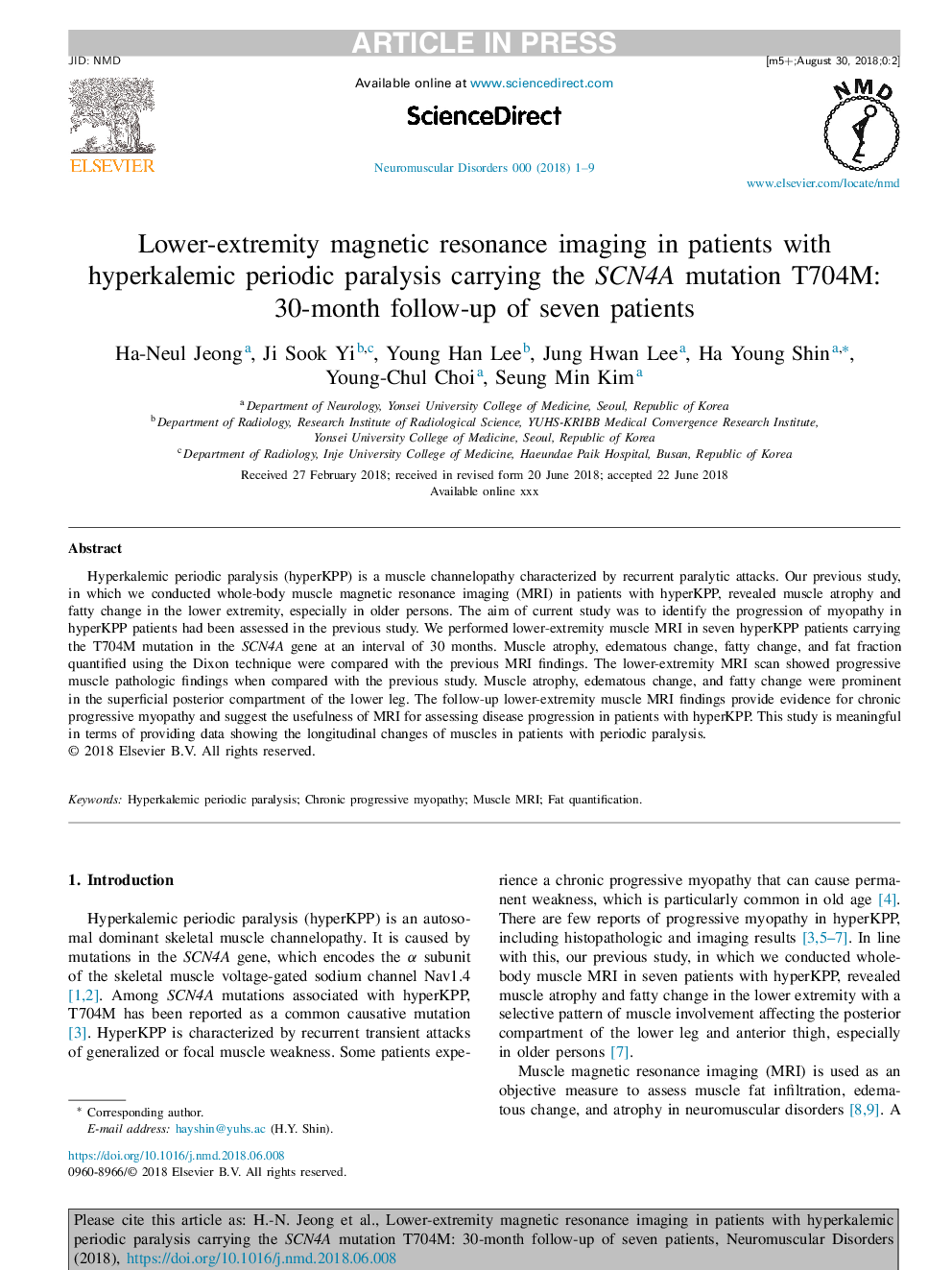| Article ID | Journal | Published Year | Pages | File Type |
|---|---|---|---|---|
| 11014759 | Neuromuscular Disorders | 2018 | 9 Pages |
Abstract
Hyperkalemic periodic paralysis (hyperKPP) is a muscle channelopathy characterized by recurrent paralytic attacks. Our previous study, in which we conducted whole-body muscle magnetic resonance imaging (MRI) in patients with hyperKPP, revealed muscle atrophy and fatty change in the lower extremity, especially in older persons. The aim of current study was to identify the progression of myopathy in hyperKPP patients had been assessed in the previous study. We performed lower-extremity muscle MRI in seven hyperKPP patients carrying the T704M mutation in the SCN4A gene at an interval of 30 months. Muscle atrophy, edematous change, fatty change, and fat fraction quantified using the Dixon technique were compared with the previous MRI findings. The lower-extremity MRI scan showed progressive muscle pathologic findings when compared with the previous study. Muscle atrophy, edematous change, and fatty change were prominent in the superficial posterior compartment of the lower leg. The follow-up lower-extremity muscle MRI findings provide evidence for chronic progressive myopathy and suggest the usefulness of MRI for assessing disease progression in patients with hyperKPP. This study is meaningful in terms of providing data showing the longitudinal changes of muscles in patients with periodic paralysis.
Related Topics
Life Sciences
Neuroscience
Developmental Neuroscience
Authors
Jeong Ha-Neul, Yi Ji Sook, Lee Young Han, Lee Jung Hwan, Shin Ha Young, Choi Young-Chul, Kim Seung Min,
